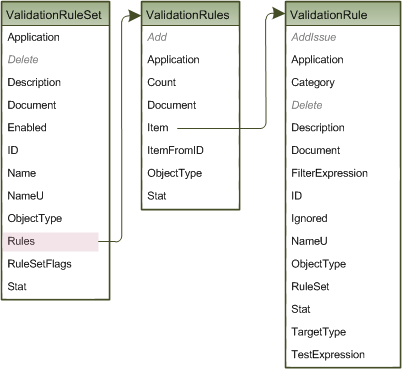Once you have a rule set you can review, amend, or add to the rules within it. You can add a rule using the ValidationRules.AddRule(NameU as string) method. Note that the NameU is really for use in code, since it is the Description property that is displayed in UI. The NameU must be unique within the Rules collection of the parent ValidationRuleSet.

You can retrieve a rule by its index position in the collection, using ValidationRules.Item(index), or by its ID using ValidationRules.ItemFromID(ID). Once you have retrieved a ValidationRule you can read its NameU and Description, or check if the rule set is ignored for validation.
Public Sub EnumerateRules() Dim doc As Visio.Document Dim ruleSet As Visio.ValidationRuleSet Dim rule As Visio.ValidationRule Set doc = Visio.ActiveDocument For Each ruleSet In doc.Validation.RuleSets If ruleSet.Enabled Then Debug.Print "EnumerateRules for RuleSet : " & _ ruleSet.nameU & " : Count = " & _ ruleSet.Rules.Count...

